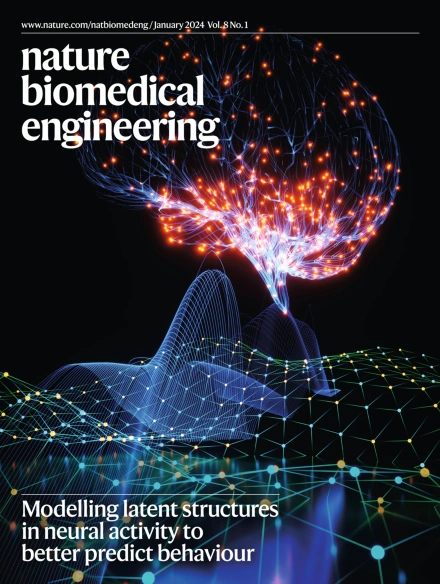Targeting circulating mechanoresponsive monocytes and macrophages to reduce fibrosis.
IF 26.8
1区 医学
Q1 ENGINEERING, BIOMEDICAL
引用次数: 0
Abstract
In response to injury, a variety of different cells are recruited to sites of injury to facilitate healing. Recent studies have examined the importance of the heterogeneity of tissue resident fibroblasts and mechanical signalling pathways in healing and fibrosis. However, tissue repair and the inflammatory response also involves blood cells that are recruited from the circulation. Here we identify mechanoresponsive myeloid subpopulations present in scar and unwounded skin. We then modulate these subpopulations by manipulating mechanical strain in vivo and in vitro and find that specifically targeting myeloid mechanical signalling is sufficient to reduce the pro-fibrotic myeloid subpopulations and restore the native, anti-inflammatory subpopulations. In addition, myeloid-specific mechanotransduction ablation also downregulates downstream pro-fibrotic fibroblast transcriptional profiles, reducing scar formation. As inflammatory cells circulate and home to injury sites during the initial healing phases in all organs, focusing on mechanoresponsive myeloid subpopulations may generate additional directions for systemic immunomodulatory therapies to target fibrosis and other diseases across other internal organ systems.靶向循环机械反应性单核细胞和巨噬细胞减少纤维化。
在对损伤的反应中,各种不同的细胞被招募到损伤部位以促进愈合。最近的研究已经检查了组织驻留成纤维细胞的异质性和机械信号通路在愈合和纤维化中的重要性。然而,组织修复和炎症反应也涉及从循环中招募的血细胞。在这里,我们确定机械反应性骨髓亚群存在于疤痕和未受伤的皮肤。然后,我们通过在体内和体外操纵机械应变来调节这些亚群,并发现特异性靶向髓系机械信号足以减少促纤维化髓系亚群并恢复原生的抗炎亚群。此外,骨髓特异性机械转导消融也下调下游促纤维化成纤维细胞转录谱,减少疤痕形成。由于炎症细胞在所有器官的初始愈合阶段循环并返回损伤部位,因此关注机械反应性骨髓亚群可能为针对纤维化和其他内部器官系统疾病的全身免疫调节治疗提供额外的方向。
本文章由计算机程序翻译,如有差异,请以英文原文为准。
求助全文
约1分钟内获得全文
求助全文
来源期刊

Nature Biomedical Engineering
Medicine-Medicine (miscellaneous)
CiteScore
45.30
自引率
1.10%
发文量
138
期刊介绍:
Nature Biomedical Engineering is an online-only monthly journal that was launched in January 2017. It aims to publish original research, reviews, and commentary focusing on applied biomedicine and health technology. The journal targets a diverse audience, including life scientists who are involved in developing experimental or computational systems and methods to enhance our understanding of human physiology. It also covers biomedical researchers and engineers who are engaged in designing or optimizing therapies, assays, devices, or procedures for diagnosing or treating diseases. Additionally, clinicians, who make use of research outputs to evaluate patient health or administer therapy in various clinical settings and healthcare contexts, are also part of the target audience.
 求助内容:
求助内容: 应助结果提醒方式:
应助结果提醒方式:


